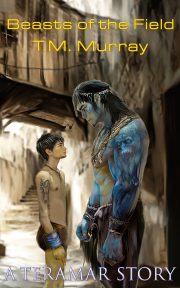Only as Good as Our Tools: Drafting by Hand and Fountain Pens
by Carrie Finch
Editor’s note: This piece is part of an occasional series titled Writing by Other Means, in which authors share personal experiences and industry intel around different production contexts and writing tools.
Painters have brush and canvas. Dancers have mirrors and marley floors. Musicians have their instruments and the loving maintenance they require. Artists and craftspeople have beautiful tools with storied pasts that ground them in their history. There’s an easy access to the romance of the craft, a tantalizing indulgence that can feed the love and lift the passion when the grind of the work makes energy wane.
Writers type. A lot. It’s tough to be a writer in this era and not spend the bulk of our time typing. In the recent SFWA Blog article (Temporarily) Computer-Free Writing, N. R. M. Roshak wrote about alternative methods of getting our words onto the page, mentioning first the historic standard of pen on paper. Personally, I’ve found a lot of joy in writing by hand, especially using fountain pens. There’s a quiet pleasure in putting pen to paper, a sort of reaching back through time, thinking of the writers who–with similar tools–were able to create my favorite stories.
Why Use Fountain Pens
As writers, we’re cautioned against being too attached to any part of how we do our work. At every turn, we’re told “kill your darlings,” not just in prose but in process as well. And there is wisdom in this. There is a fine line between being particular and being precious. Don’t get too attached to your seat at the library, lest you find someone else sitting in it. Don’t get too attached to your corner café, lest it close, and suddenly you’re incapable of working at the pace you once could. Flexibility allows us to get our work done, even when the conditions aren’t right.
But there is something to be said for indulgence. There is something to be said for a routine that allows your mind to turn away from worries about the real world, the house that needs cleaning, the family that needs caring for, the boss that emails after hours, and turn toward the work of writing. Making that cup of tea. Turning on that specific playlist (or sometimes, that single song on repeat for hours). Adjusting the lamp to have the light just so.
Fountain pens can be part of that indulgence. The weight of the pen in your hand, the drag of it across a sheet of paper, can be such a satisfying tactile experience. Depending on your preferences, some pens will make noise as they scratch along the page. Others glide smoothly and silently. It can be such a delight to discover your preferred set of tools and to have that delight carry into your next writing session when you bring them out.
There are also practical reasons to use fountain pens. Earlier this year, R.J. Huneke wrote in his article Writing SFF With Paper and Pen Spurs Memory and Creativity about the benefits of using pen and paper, the way it can change our cognitive processes, allowing us to be creative in ways that typing might not. If you were inspired to try writing by hand, I highly recommend fountain pens. Unlike most pens, they require absolutely no pressure to deposit ink onto the paper, other than the weight of the pen itself. You no longer have to grip the pen or press down on the page, which can prevent fatigue and even injury.
Recently, I went to the San Francisco International Pen Show, three days dedicated to the world of fountain pens. And if there’s one thing I’ve seen to be consistent among fountain pen fans, it’s how excited we are to talk to anyone about pens. Show us the slightest bit of curiosity, and we’ll happily talk your ear off, offering our opinions on the ideal starter pen on the way.
Where to Start
And what is the ideal starter pen? The popular recommendations are the Lamy Safari and the Pilot Metropolitan, and whichever you pick I recommend starting with a fine nib. They come with ink cartridges, so all you have to do is click one into place and wait for the ink to start flowing. But if you want to use bottled ink, most pens will also come with a converter, a device that draws up ink into the pen. There’s a slight learning curve with a fountain pen, as the angle with which you hold the pen does matter. Prepare to play around with this a little bit until you find what’s comfortable for you.
Perhaps you’re asking: What about left-handed writers? The richly flowing ink can take a moment to dry, and most lefties will say this is just long enough for it to smear across the page and stain the side of their hand. But there are solutions available. Faster-drying inks, more absorptive paper, and finer nibs can all help avoid some common issues encountered by those who write left-handed.
There’s a wide world of pens, each settling in the hand differently. There’s also a wide world of nib styles. Not just the flexion in the metal, but also the grind of the nib, which can be fine-tuned for your hand by a professional. There are a multitude of inks available, and each one will feel slightly different as you write with it.
And don’t forget the paper, each with a different texture, thickness, and rate of absorption, each giving a different writing experience. You don’t have to start anywhere special; your run-of-the-mill spiral notebook is just fine. But once you decide to explore further, there are plenty of videos and blog posts demonstrating how various papers soak up ink and whether they bleed or ghost (differing ways in which the ink is visible on the other side of the page). There are also paper sample packs available, so you can work with several papers before you commit to one. Some people prefer a smooth glide, others enjoy coarse feedback. Some people are fine with a bit of ghosting, others are repulsed by the thought. Just like with pens, you get to discover your own personal fit here.
I hope this inspires you to consider starting your own fountain pen journey or perhaps reignites an old hobby. Whatever you’re looking for in your handwriting experience, there’s a combination of tools that will feel just right for you. And like all things in life, the journey is part of the experience. Happy writing!
 Carrie Finch is a writer in San Francisco, California. Her published fiction includes fantasy, science fiction, and horror. She goes by “geardrops” on every social media imaginable and would love to talk to you about fountain pens. carriefinch.com
Carrie Finch is a writer in San Francisco, California. Her published fiction includes fantasy, science fiction, and horror. She goes by “geardrops” on every social media imaginable and would love to talk to you about fountain pens. carriefinch.com



